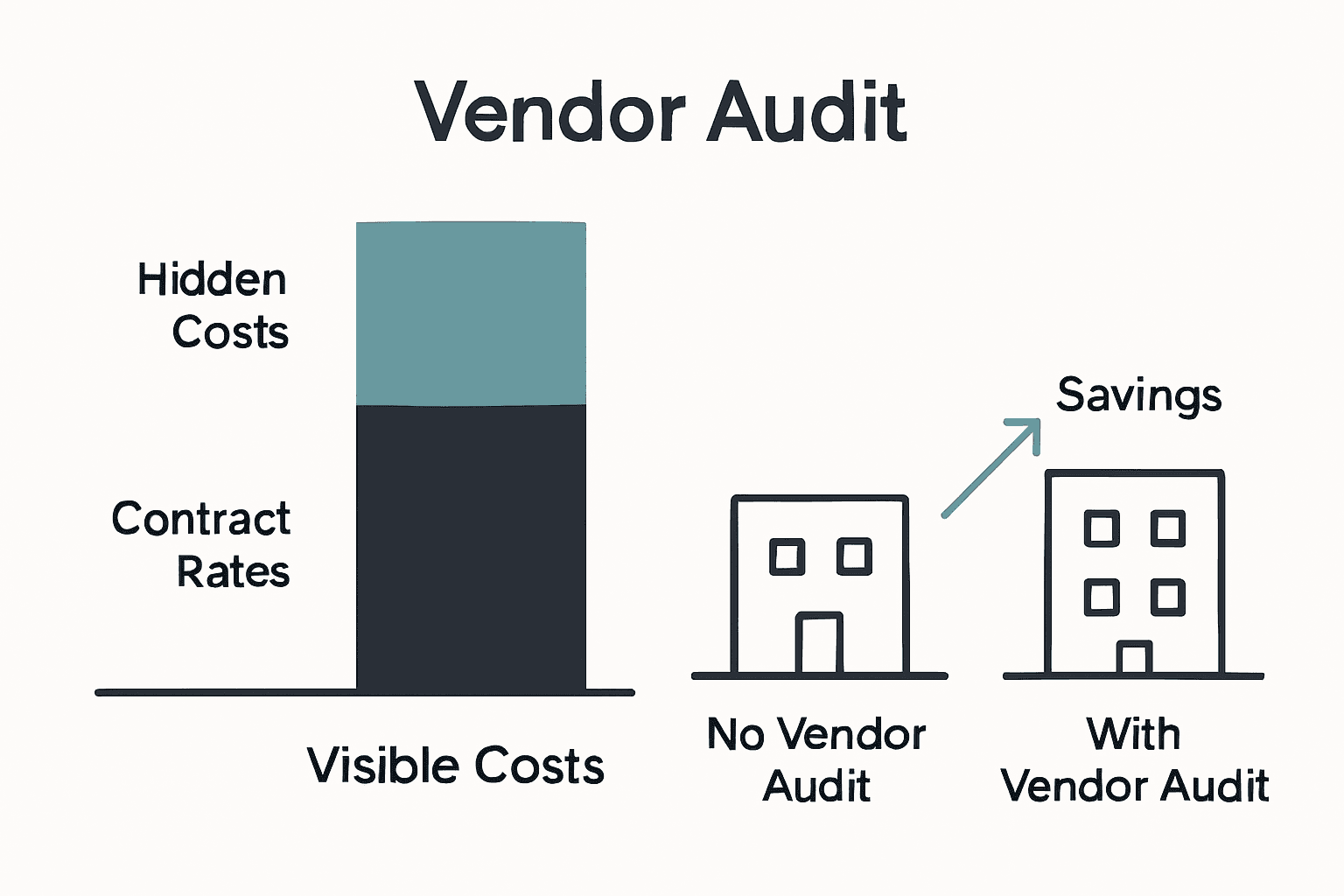The Vendor Audit: Complete Guide for $50M Businesses

Did you know that regional businesses spending between $50,000 and $150,000 each month on outside vendors often miss out on hidden savings worth up to $500,000 a year? Many midsize companies in the Midwest and Southeast rely on agencies and consultants, but all too often this leads to lost profits and tangled operations. By closely examining every vendor relationship, decision-makers can spot wasted resources and turn costly habits into long-term value for their teams and bottom line.
Key Takeaways
| Point | Details |
|---|---|
| Strategic Vendor Audit | A vendor audit evaluates the financial and operational impact of external vendors for businesses spending $50K-$150K monthly, helping uncover hidden costs and inefficiencies. |
| Dependency Risks | Common vendor relationships can create dependencies that negatively affect operational performance and profit margins, with critical functions becoming overly reliant on external partners. |
| Transformative Approach | Transitioning from vendor dependency to internal capabilities not only reduces costs but also builds sustainable strengths within the organization. |
| Potential Savings | Implementing a vendor audit may reveal $200K-$500K in annual savings by identifying unnecessary external expenses and encouraging the development of internal expertise. |
Table of Contents
- What Is A Vendor Audit For Regional Businesses
- Common Vendor Types And Dependency Traps
- How The Vendor Audit Process Works
- Hidden Vendor Costs And Annual Savings
- Risks, Red Flags, And Independence Strategies
What Is a Vendor Audit for Regional Businesses
A vendor audit represents a strategic financial and operational assessment designed specifically for regional businesses spending $50K-$150K monthly on external agencies, consultants, and service providers. Unlike traditional corporate audits, this process helps midsize companies in the Midwest and Southeast understand exactly how much money they’re spending and whether those vendors deliver genuine value.
Why Regional Businesses Need Vendor Audits
- Identify hidden outsourcing costs across multiple business functions
- Uncover inefficient vendor relationships consuming profit margins
- Evaluate performance metrics beyond basic contract terms
- Prepare for potential business exit or valuation improvements
According to AuditBoard, a vendor audit is a “formal, structured evaluation of a third-party vendor’s operations, security, compliance, and performance.” For $40-75M regional businesses, this means going beyond surface-level contract reviews to understanding the true economic impact of every external relationship.
The goal isn’t just cost-cutting—it’s strategic capability building. A comprehensive vendor audit helps business owners refocus on their core craft by systematically replacing expensive external dependencies with empowered internal teams. Think of it as a financial forensics mission: tracking down where your hard-earned revenue is truly being spent and transforming those insights into operational efficiency.
Common Vendor Types and Dependency Traps
Regional businesses typically fall into vendor dependency traps across multiple business functions, often without realizing they’re spending $50K-$150K monthly on external partners who create more complexity than value. These dependencies emerge through seemingly innocent professional relationships that gradually consume operational bandwidth and profit margins.
Most Common Vendor Types for $40-75M Businesses
- Marketing agencies (digital, creative, email campaigns)
- Growth and strategy consultants
- Technology implementation partners
- Operations and process improvement firms
- Fractional executive services (CMO, CTO, COO)
- Design and development shops
- Offshore/outsourced team providers
The dependency trap works insidiously. What starts as a strategic partnership gradually becomes a crutch, with external vendors slowly replacing internal capabilities. Business owners find themselves paying premium rates for work their own teams could potentially execute—if given proper training, tools, and strategic guidance.

These vendor relationships often create invisible organizational friction. They introduce communication layers, increase decision-making complexity, and divert focus from core business objectives. By continuously outsourcing critical functions, regional businesses inadvertently transfer institutional knowledge, reduce team confidence, and create long-term financial dependencies that can dramatically impact operational efficiency and profitability.
Here’s a summary of the most common vendor types and their associated dependency risks:
| Vendor Type | Common Services Provided | Typical Dependency Trap |
|---|---|---|
| Marketing Agencies | Digital campaigns Creative |
Loss of brand control Overlapping tasks |
| Strategy Consultants | Growth planning Market analysis |
Reliance on external direction |
| Tech Implementation Partners | Software integration Support |
Locked-in proprietary systems |
| Operations/Process Firms | Workflow optimization Efficiency |
Erosion of internal process knowledge |
| Fractional Executives | CMO/CTO/COO services | Leadership instability Skill gaps |
| Design & Dev Shops | UX/UI Web/mobile app build |
Loss of product ownership |
| Offshore Teams | Back-office Development |
Communication barriers Coordination lag |
How the Vendor Audit Process Works
For regional businesses spending $50K-$150K monthly on external vendors, the vendor audit process transforms from a theoretical exercise into a strategic financial intervention. This systematic approach breaks down complex vendor relationships into actionable insights that can dramatically reduce operational costs and restore internal capabilities.
Four-Stage Vendor Audit Framework
- Comprehensive Vendor Mapping
- Catalog all current external vendor relationships
- Document monthly and annual spending per vendor
- Identify primary function and contractual obligations
- Calculate total outsourcing expenditure across business functions
- Performance and Cost Analysis
- Evaluate vendor deliverables against actual business outcomes
- Compare market rates with current vendor pricing
- Assess contract efficiency and potential negotiation points
- Quantify hidden costs of vendor management
- Capability Assessment
- Determine which vendor services could be internalized
- Evaluate internal team’s current skill gaps
- Identify training and tool requirements for replacement
- Calculate potential savings from in-house capabilities
The final stage focuses on strategic replacement—not just cutting costs, but building sustainable internal competencies. Business owners transition from passive consumers of external services to active architects of their operational infrastructure. This approach turns vendor dependency into a strategic opportunity for organizational transformation, typically yielding $200K-$500K in annual savings for businesses in the $40-75M revenue range.
Hidden Vendor Costs and Annual Savings
For regional businesses in the $40-75M revenue range, hidden vendor costs represent a financial iceberg—with visible expenses representing only a fraction of the true economic impact. Most companies unknowingly burn through $50K-$150K monthly on external vendors, with substantial hidden expenses lurking beneath surface-level contract rates.
Categories of Invisible Vendor Expenses
- Internal management time tracking vendor deliverables
- Communication overhead and coordination meetings
- Quality control and revision processes
- Opportunity costs of delayed or suboptimal work
- Contract negotiation and legal review expenses
- Training and onboarding external teams
- Performance monitoring and reporting
These hidden costs compound dramatically over time. What appears to be a $10,000 monthly marketing agency retainer can actually translate to $150,000-$250,000 in total organizational expense when considering all indirect expenditures. Regional businesses frequently discover they’re spending 1.5-2.5x more on vendor relationships than their baseline contracts suggest.

A strategic vendor audit can typically uncover $200K-$500K in annual savings by systematically dismantling inefficient external dependencies. The most significant savings emerge not from cutting vendors entirely, but by transforming those relationships into internal capabilities. Business owners who invest in training, tools, and strategic realignment can convert vendor expenses into sustainable organizational strength, turning a cost center into a competitive advantage.
Risks, Red Flags, and Independence Strategies
Vendor relationships for $40-75M regional businesses are fraught with strategic risks that can silently erode operational effectiveness and financial performance. These dependencies create complex organizational vulnerabilities that extend far beyond simple contract terms, potentially compromising a company’s ability to innovate, adapt, and maintain competitive advantage.
Critical Vendor Dependency Red Flags
- Consistently missed project deliverables
- Escalating costs without demonstrable value
- Lack of transparency in billing and processes
- Over-reliance on single vendor expertise
- Minimal knowledge transfer to internal teams
- Complex, opaque contract structures
- Resistance to performance metric accountability
The most dangerous vendor trap emerges when external partners become so embedded that they effectively control critical business functions. This organizational dependency transforms vendors from service providers to de facto management, slowly extracting institutional knowledge and creating artificial complexity that prevents internal teams from developing essential capabilities.
Successful independence strategies focus on systematic capability building. By investing in training, implementing scalable internal processes, and strategically replacing vendor services with empowered teams, businesses can transform their $50K-$150K monthly vendor spend into a strategic investment in organizational resilience. The goal isn’t just cost reduction—it’s creating a flexible, adaptive internal infrastructure that can rapidly respond to market changes without relying on external crutches.
Break Free from Costly Vendor Traps and Take Back Control
Every year, $40-75M Midwest and Southeast businesses quietly lose $200K-$500K to consultants, agencies, and vendors across marketing, operations, technology, and more. If your team is spending $50K-$150K a month just to manage outside help, you already know the pain. The real story behind your vendor audit? These relationships create hidden costs, drain your margin, and turn passionate founders into manager-of-managers, not doers. The real problem is bigger than one agency or consultant. It is a web of dependency holding back your growth, hurting your exit value, and stealing focus from what you love.

Stop the cycle now. Reclaim those hundreds of thousands each year by in-housing what you outsource. Average Robot helps $50-65M businesses just like yours replace expensive vendors with AI-enabled internal teams across all functions. Get a free Vendor Dependency Assessment to see exactly where your spend can drop 30-40 percent and your internal culture can grow. Map your real costs, reveal hidden traps, and discover a step-by-step plan to replace agencies, tech partners, consultants, and more with capabilities your own team can own. You built your business on craft, not contract review. Find out how to cut consultant spend, replace agency costs, and increase business value by visiting our main site https://average-robot.com.
Frequently Asked Questions
What is a vendor audit?
A vendor audit is a structured evaluation of third-party vendors, assessing their operations, performance, compliance, and overall value delivered to a business.
Why do regional businesses need vendor audits?
Regional businesses need vendor audits to uncover hidden costs, assess vendor performance, improve operational efficiency, and prepare for potential business exits or valuation improvements.
What are some common vendor types that businesses typically rely on?
Common vendor types include marketing agencies, strategy consultants, technology implementation partners, operations firms, fractional executives, design and development shops, and offshore teams.
How can a vendor audit help save costs for a business?
A vendor audit can identify inefficiencies and hidden expenses, often uncovering annual savings of $200K-$500K by converting reliance on external vendors into internal capabilities.




